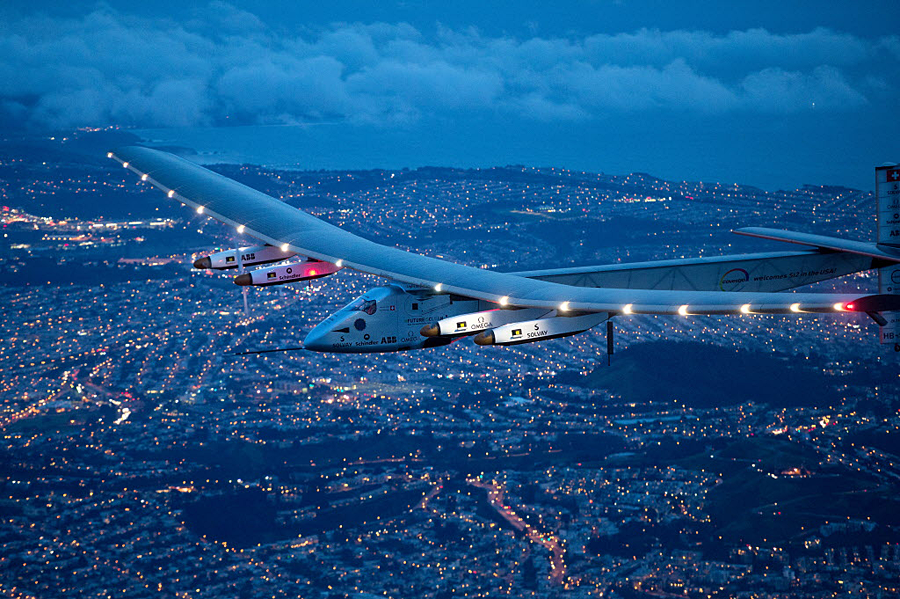Solar-powered plane lands in the hometown of the Wright Brothers
Loading...
Two Swiss pilots have brought their campaign for renewable energy and innovation to the hometown of the brothers that recorded the first powered flight.
André Borschberg and Bertrand Piccard landed the Solar Impulse 2 – a plane powered only by the sunlight gathered by the 17,000 solar cells that bedeck its wings – Saturday night in Dayton, Ohio, the home of Orville and Wilbur Wright.
The symbolism was not lost on Mr. Borschberg and Mr. Piccard, even after a nearly 17-hour flight from Tulsa, Oklahoma.
"The Wright brothers inspired Solar Impulse from the beginning of our adventure," Borschberg and Piccard wrote on their blog. "While there are always people who try to disprove the feasibility of what you are trying to do, people who have learned from the Wright brothers have learnt to push forward."
The pair acknowledge that the Solar Impulse 2, with its unheated and unpressurized cabin and room for just two, might not have immediate applications for commercial aviation. But it could lend insight into improving technologies on the ground, as well as emphasize the importance of renewable energy to the aviation industry, the fastest-growing source of manmade greenhouse gas emissions.
The solar-powered plane's wingspan is longer than that of most jumbo jets, but its carbon-fiber skin and honeycomb foam keeps its weight to only as much as a car. It can reach an altitude of about 28,000 feet, but glides at a cool 5,000 to 6,000 feet at night to conserve energy, which was how it descended into Ohio Saturday.
Its arrival there concludes the 12th leg of a journey that began just over a year ago in Abu Dhabi. The most arduous leg of the journey so far has been a five-day flight from Japan to Hawaii. Borschberg, a veteran pilot, recorded the longest solo flight time ever. But, tropical heat damaged the plane's batteries, grounding it in Hawaii for nine months.
The plane resumed its journey across the world on April 21, flying to San Francisco before heading on to Arizona and Oklahoma.
In the 11,000-miles the Solar Impulse 2 flew from Abu Dhabi to Hawaii, the plane produced about 5,644 kWh of electricity, while consuming no fuel, according to Solar Impulse's website. The electricity it produced is enough to heat a whole home for a year.
Although the plane offers a glimpse into the potential of solar-powered aircrafts, "commercial applications in aviation are still a ways into the future," Borschberg acknowledged in an interview during a previous visit to the newsroom of The Christian Science Monitor.
"But what’s being learned now can help improve the way companies design products for use on the ground, [says Borschberg], such as more-efficient homes, cars, and factories," reported the Monitor's Gregory M. Lamb in March. "The electric motor in the Solar Impulse 2 is 97 percent efficient in its use of energy, he says. Today’s automobiles are perhaps 30 or 40 percent efficient."
Such energy efficiency contrasts sharply with that of commercial airliners at a time when the aviation industry is under increased scrutiny. While the industry accounts for about 2 percent of global greenhouse gas emissions, research revealed it is one of the fastest growing sources of global emissions as air travel becomes more affordable and more people travel, according to The New York Times.
The Solar Impulse 2, said Piccard Saturday, "is the first and only airplane of endless endurance."
"It's a way to show what we can do with impossible things, with clean technologies, energy saving technologies," he told ABC 22.
The next leg of the plane's around-the-world journey will likely be a flight to New York, according to the Associated Press.







